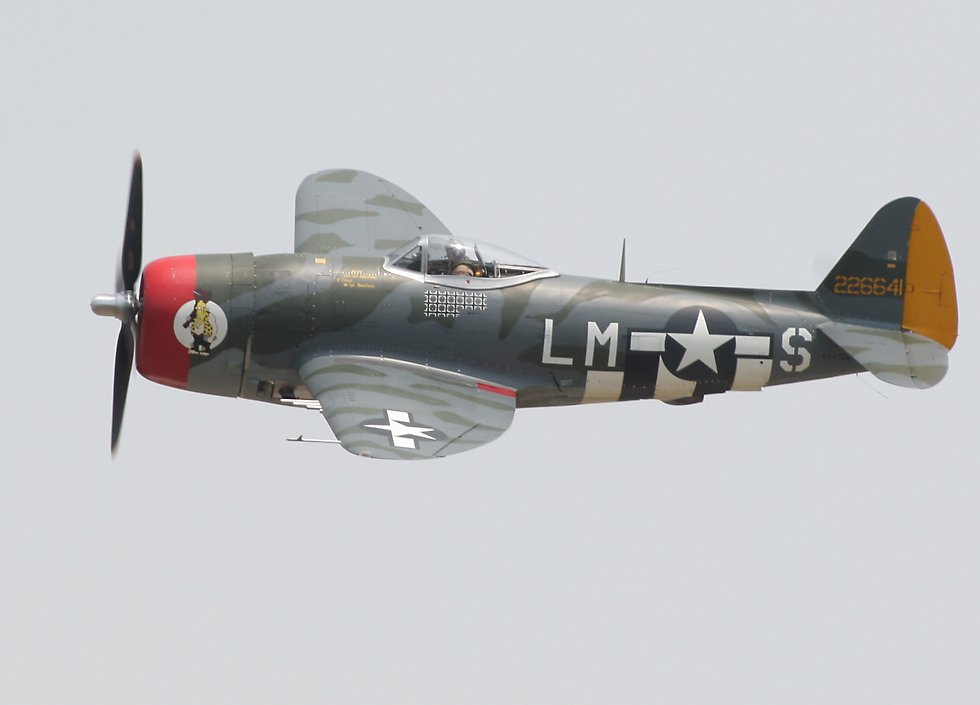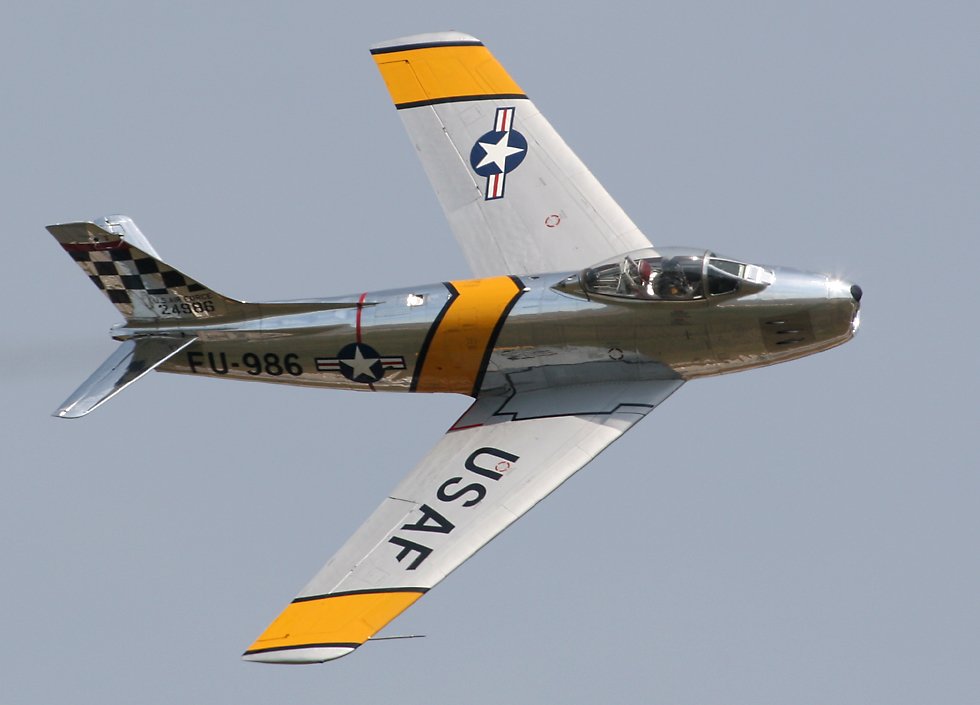Yankee Air Museum "Thunder Over Michigan" Airshow 2007
|
For some years the Yankee Air Museum "Thunder Over Michigan" airshow at Ypsilanti
has been one of America's best warbirds events, and 2007 saw a continuation
of this tradition, with no fewer than five world war two era P-51 Mustang
fighters, "Excalibur", "Moonbeam McSwine", "Petie 2nd", "Shangrila" and
this immaculate bird called "Glamorous Gal".
|
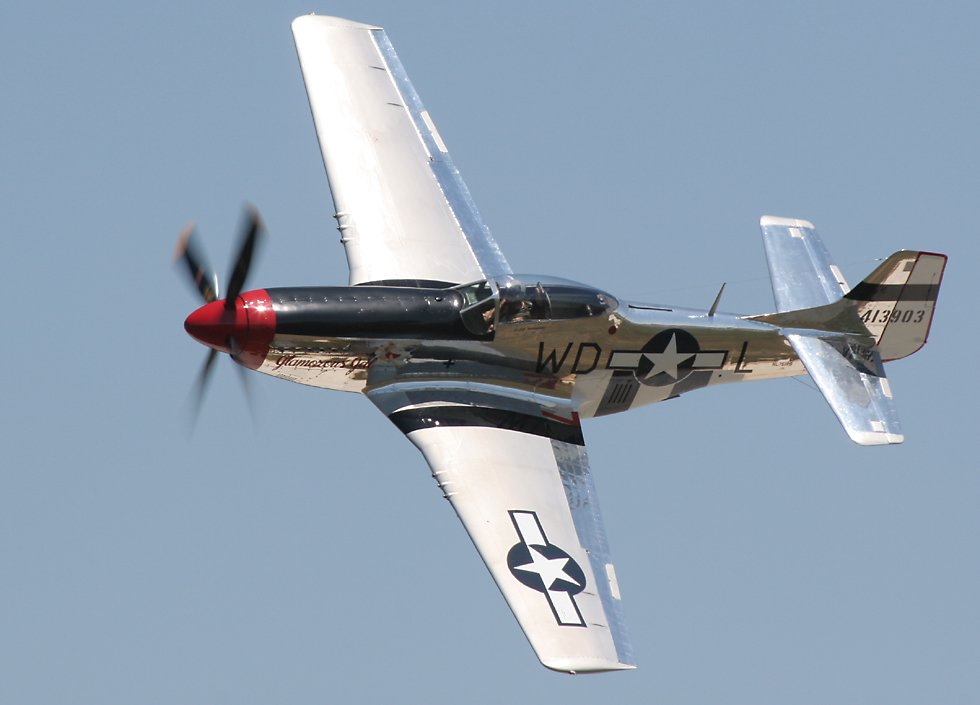 |

|
There were also three P-47 Thunderbolts flying at the show, including "No Guts,
No Glory" and "Jacky's Revenge", complete with D-Day "invasion stripes"
and underwing mounts for 500 pound bombs, which were used to great effect
during the war when the Thunderbolt was used in the ground attack role.
|
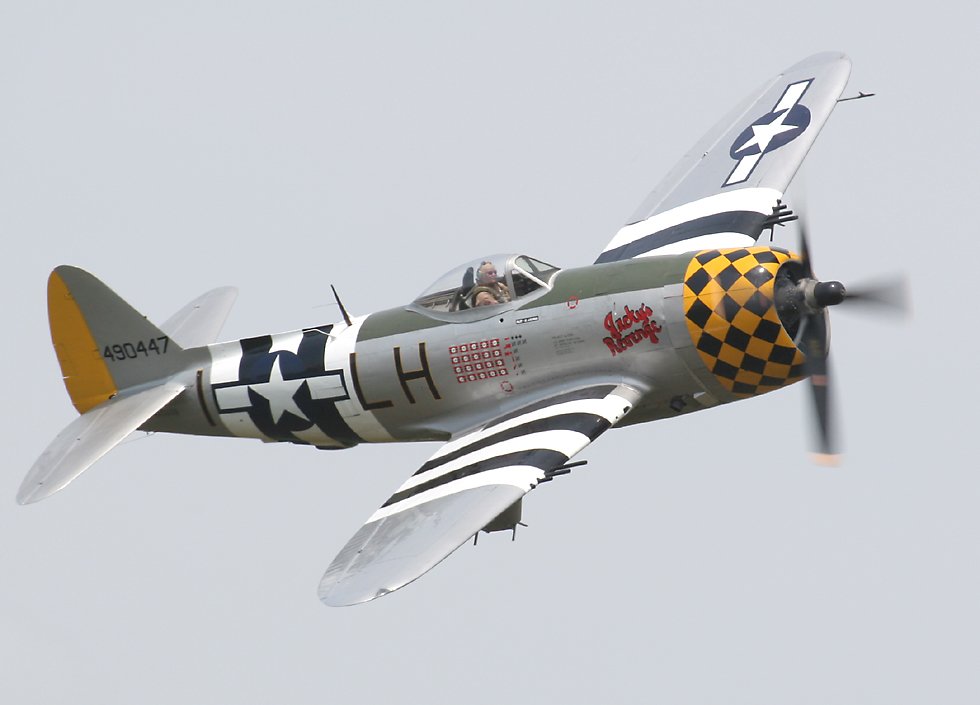 |


|
This year the show organizers tried out several innovations, including relocating
the audience areas onto the huge grassed area in the center of the airfield.
The new layout suits photographers even better than the old one, since
it puts the sun at their backs throughout the day, and this layout still
provides plenty of potential for pilots to fly curved photo passes around
the crowd area, which was one of the best features of the old layout.
Unfortunately it seems that flight instructions were expressed in a way
which lead most of the pilots to fly much further from the crowdline than
usual, and Bob Baranaskas was one of the few pilots who made the most of
the possibilities, flying this P-40N Curtiss Warhawk.
|
 |

|
There were a couple of navy fighters to go along with the army air corps birds,
including Ray Dieckman's F8F Bearcat, which unfortunately didn't fly during
the show. Coincidentally the Bearcat also didn't fly during
another big show called world war two, entering service a bit too late
to see combat.
|
 |

|
There were two Corsairs at the show, the Collings Foundation's radar-equipped
F4U-5NL, and this F4U-5 flown by Dale "Snort" Snodgrass. He's
a highly admired pilot on the airshow circuit and not at all shy of putting
on a spectacular performance, but even he showed more restraint than usual,
making only one close-in pass near the crowd, the others being disappointingly
distant.
|
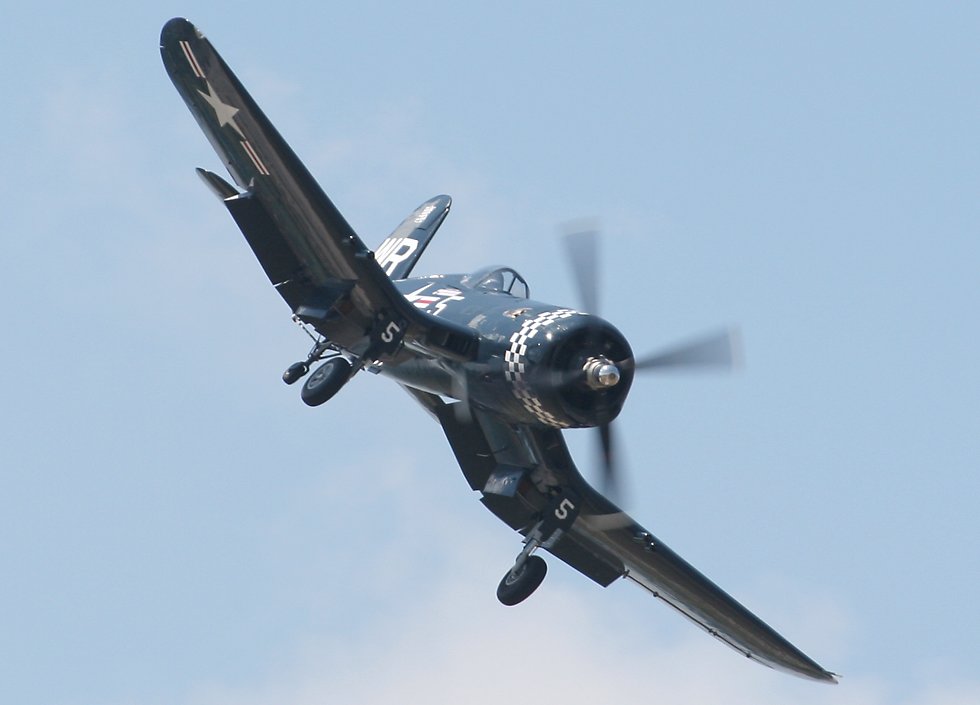 |

|
The Yankee Air Museum's own B-17 Flying Fortress "Yankee Lady" flew during
the show, though this year she was on her own, unlike the 2005 event, where
she flew with seven of the nine airworthy Flying Fortresses in America.
Bringing large numbers of a particular type together has always been a
trademark of Thunder Over Michigan, and one which is likely to continue
in future years.
|
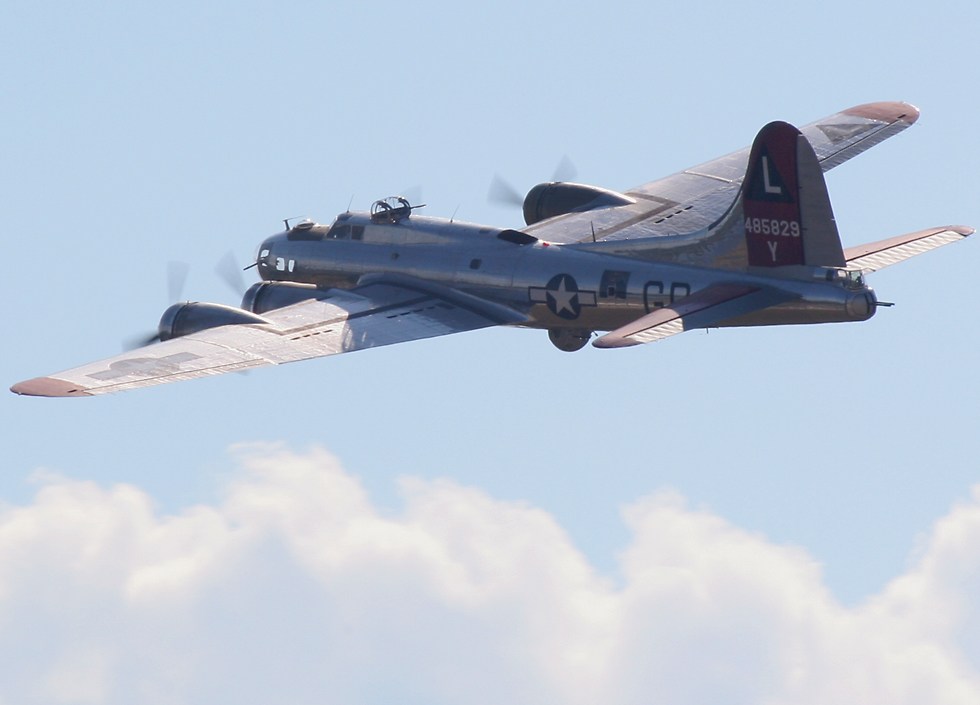 |

|
This year, though, it was the turn of the B-25 Mitchell bomber, and the airshow
organizers were able to achieve the near-impossible task of bringing no
fewer than 15 Mitchells to the event, the largest gathering since the making
of the "Catch 22" movie.
|
 |

|
Here you can see about half of them lined up on the apron. Maintenance
of these old aircraft is always an issue, but the luck of the Irish was
shining as brightly as the weather, and all fifteen of them flew during
the show.
|
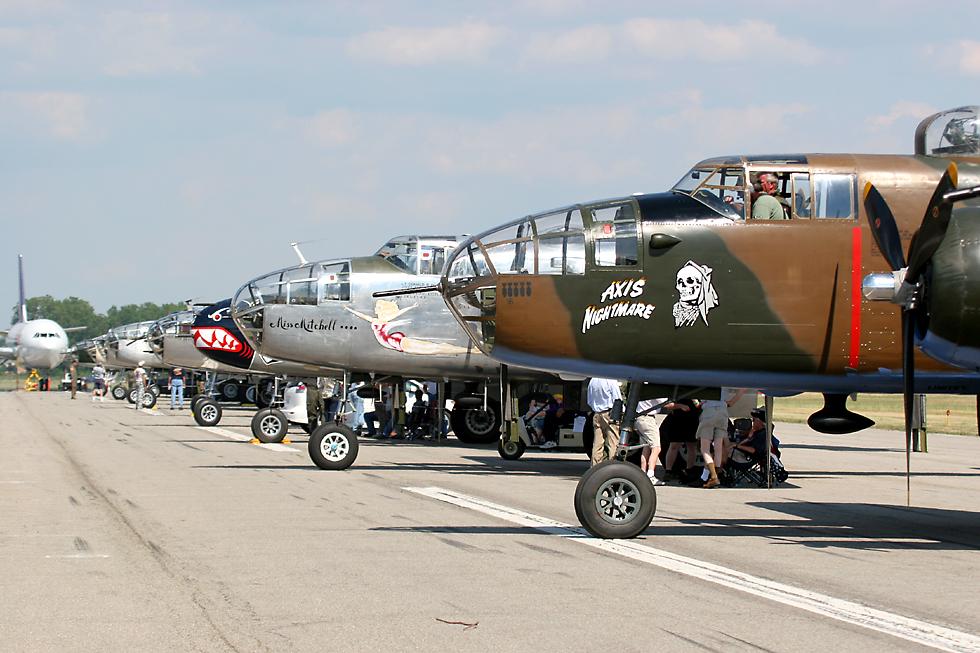 |

|
Even the most ardent fan got to see plenty of Mitchells in action, though the
usual Michigan heat and haze made it difficult to get decent formation
shots, since the aircraft mostly lined up only at the far end of their
circuits.
|
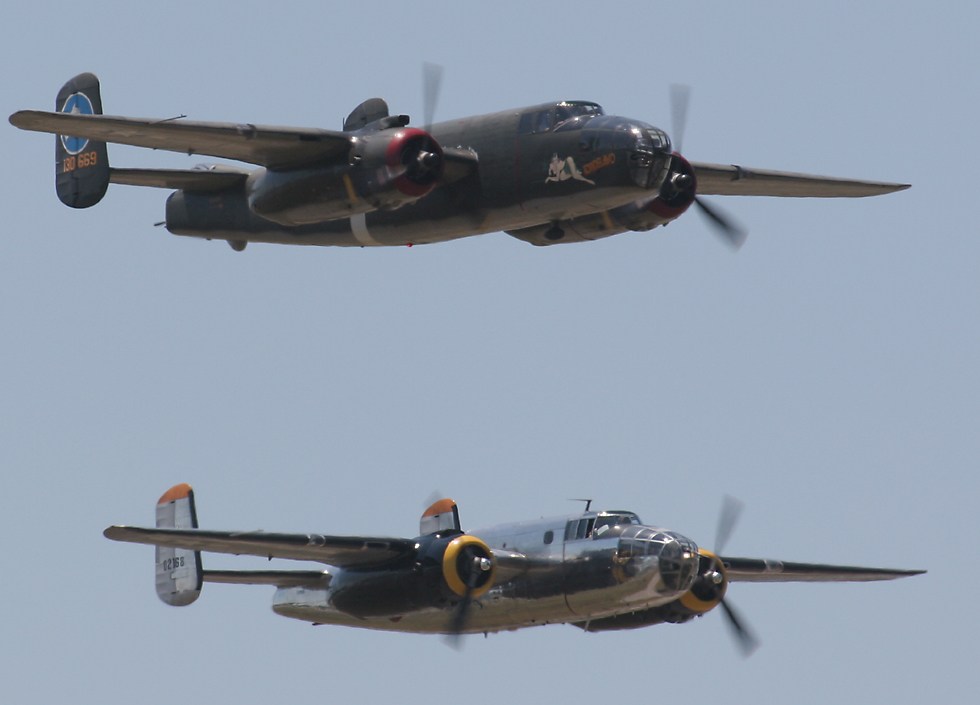 |

|
This B-25 Mitchell is called "Special Delivery" in commemoration of the "Doolittle"
Raid against Japan not long after America entered world war two.
There were many variants of the B-25 among the aircraft at the show, this
one is really a late model B-25N now configured as a B-25J, but it was
actually the early model B-25B which was used in the raid.
|
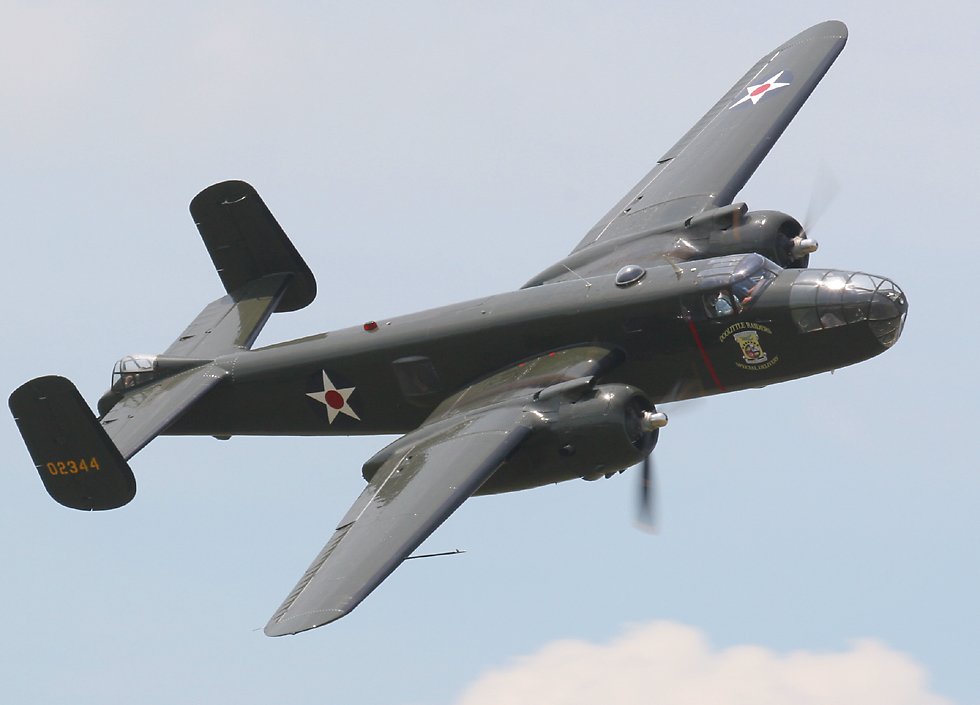 |

|
Panchito is a more typical B-25J, equipped with a glass nose for bombing and bristling
with 50 caliber machine guns in the nose, turrets and along the sides below
the cockpit - an installation first pioneered in the field, then refined
and made officially during manufacture. Here you can see all
of those guns together with Panchito's open bomb bay during a simulated
bombing run.
|
 |

|
Betty's Dream is another variant, with nose art that vividly highlights its eight
gun solid "strafing" nose. This was by no means the heaviest
armed variant of the Mitchell; the B-25H had only four guns in its solid
nose but also had a 75mm cannon which was used against ground targets and
shipping. About a thousand of this variant was produced, it's
not often seen on the airshow circuit, however you can
see the
B-25H "Barbie III" in action at the 2006 Prescott Air Show.
|
 |


|
Along with the fighters and bombers, there were also some less menacing aircraft
at this year's show. This is an O-2 Skymaster, which features
a very unusual twin engine pusher/puller arrangement, an excellent setup
if one of the engines stops working. The Skymaster earned fame
in the Vietnam war as a forward air controller, with pilots flying the
unarmored aircraft low over the jungle and deliberately exposing themselves
to enemy fire. Although the O-2 could carry a 7.62mm gatling
gun in a pod, or two rocket pods with seven rockets apiece, the actual
ground attack was usually left to a fast mover which operated with the
Skymaster, which used white phosphorus rockets to mark the target.
|
 |

|
This is the air force's current primary trainer, the T-6A Texan II, named in
honor of the T-6 Texan which was used to train most world war two pilots.
Like its predecessor, the Texan II is also used by the US navy, and as
you might imagine it's a considerably more capable aircraft than the original
Texan, with more advanced avionics and a powerful turbo-prop engine.
In spite of the similarity in name, though, the Texan II isn't really an
American designed aircraft, instead it's a modification of a Swiss aircraft,
the Pilatus PC-9.
|
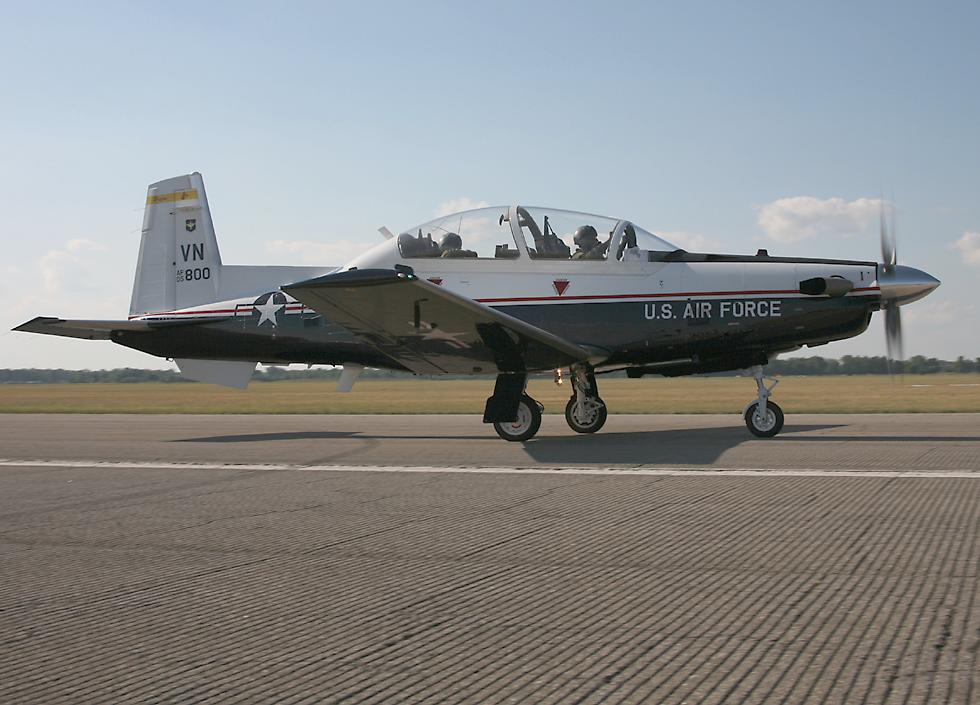 |

|
It was very good to have the Warbird Heritage Foundation's T-2 Buckeye flying
during the show. The Buckeye isn't a well-known aircraft, but
it served as the navy's intermediate level trainer all the way from 1959
to 2004, and almost all navy pilots trained in it at some stage of their
career. It's certainly a great workhorse, but it's by no stretch
of the imagination the best looking aircraft in the inventory, and has
even been immortalized for its ugliness in a well-known navy song.
The T-2 has now been replaced by the T-45 Goshawk, which is a modified
BAE Hawk trainer.
|
 |

|
Here's the air force's original jet trainer, the T-33 Shooting Star, which was
a lengthened version of the P-80 Shooting Star, the US Army Air Force's
first jet fighter. The P-80 was soon outclassed by swept wing
fighters, but the T-33 had a very long career, surviving into the 1980s
in American service, and much longer in foreign air forces.
|
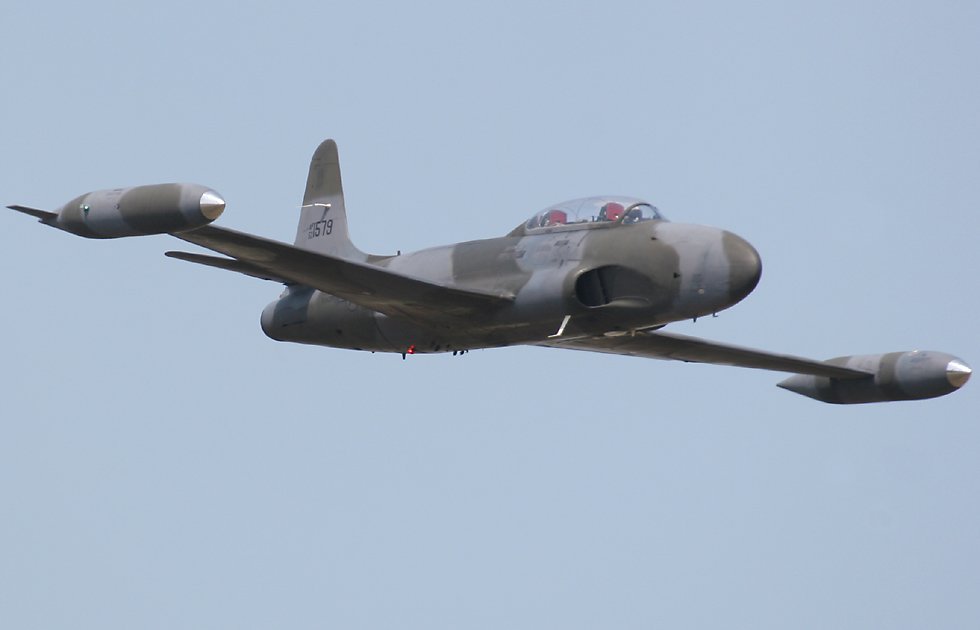 |

|
Here's a similar color scheme, but a much different aircraft! This
is an L39 Albatross, an attractive and very effective plane which happens
to be the Soviet Union's main military jet trainer. It was
designed by Aero Vodochody of Czechoslovakia, and was the follow-on from
their previous generation jet trainer, the much less good looking L29 Delfin.
|
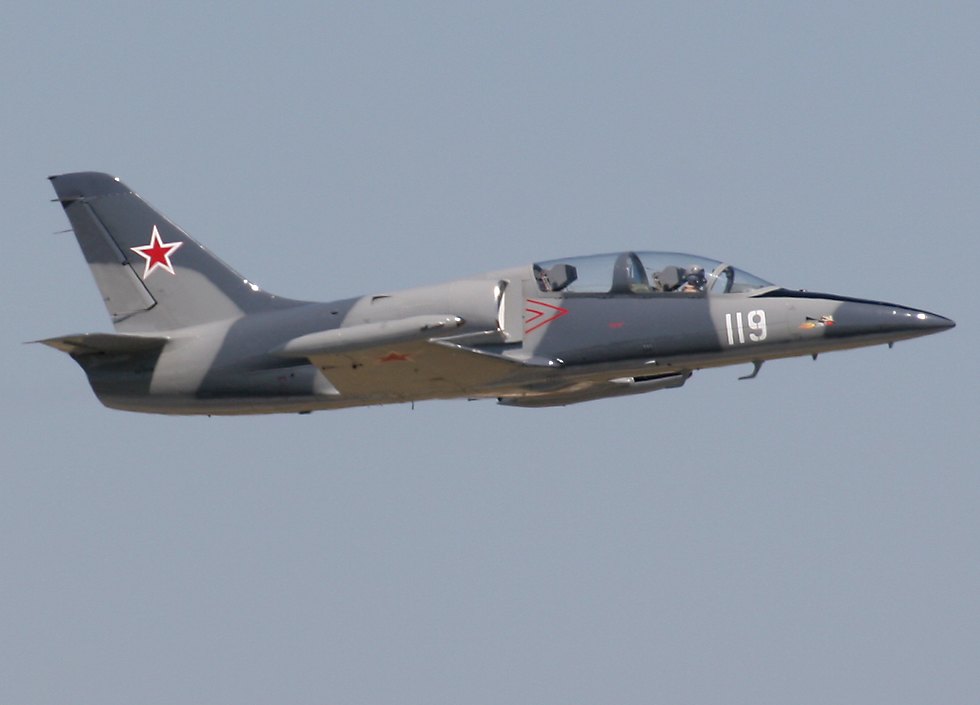 |

|
Will Ward brought his MiG-17 "Fresco" along to the show to make sure that there
wasn't only one ex-Soviet type in the air. Like Snodgrass,
Ward is a real showman, and he does a great job of putting this Vietnam
era fighter through its paces, as with this ultra low-level afterburner
pass just after takeoff.
|
 |

|
The MiG-17 took part in a Vietnam demonstration with this H-34 Seahorse helicopter,
which did a simulated rescue of a downed pilot. The T-33 was
meant to pretend to be an America jet fighter chasing the MiG, but it was
most notable for its absence!
|
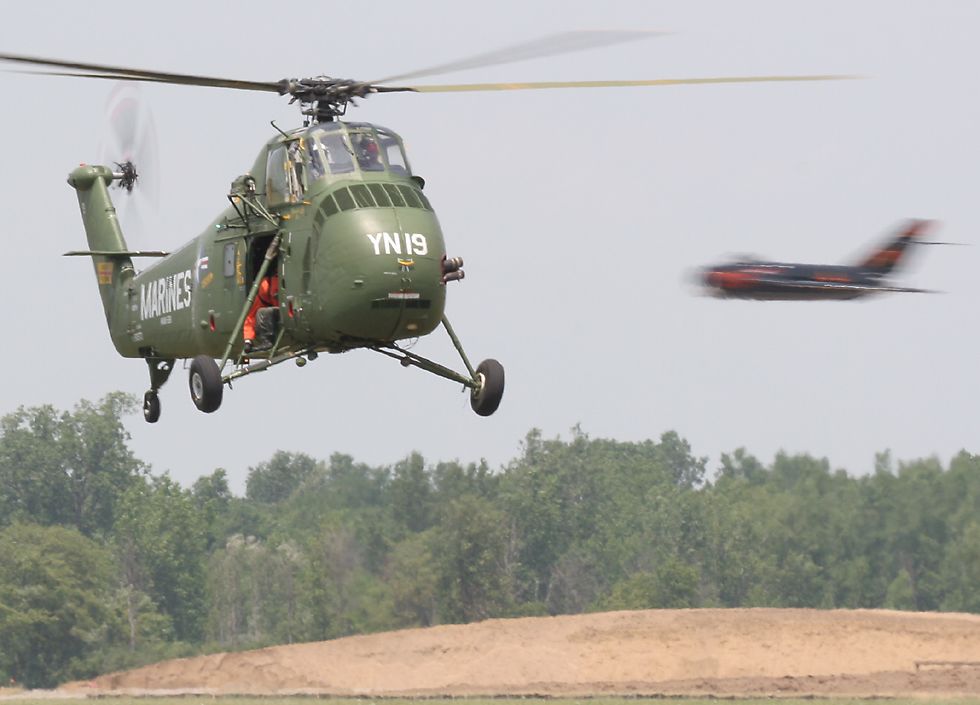 |

|
The H-34 was the highlight of the show for me, since there are very few helicopters
on the airshow circuit, let alone one as rare as this. During
its days in service this helicopter went by several names, Seahorse being
the naval utility version (which originally had the designation HUS-1),
the HSS-1 Seabat was the anti-submarine version, and the H-34 Choctaw was
the US army version; these three were later redesignated as the SH-34,
UH-34 and CH-34. American aircraft like this one had a radial
engine, but the British developed a version called the Wessex with a turbine
engine, and some American turbine conversions still operate in the US in
civilian roles.
|
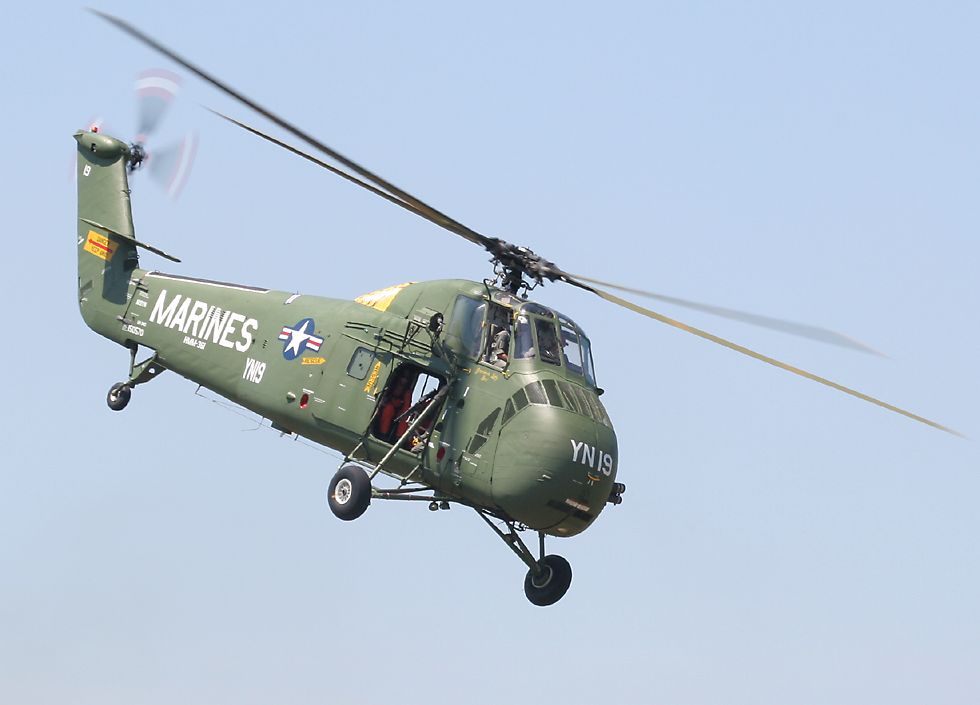
|

|
As well as the warbirds for which it's famous, Thunder Over Michigan always
manages to get one or more modern military acts, which generally include
a navy "Tailhook Legacy Flight" or air force "Heritage Flight" combining
old and new aircraft types in formation. Usually this is a
single modern type with a single world war two type, but this year had
an F-16 Fighting Falcon with no fewer than three P-51 Mustangs.
|
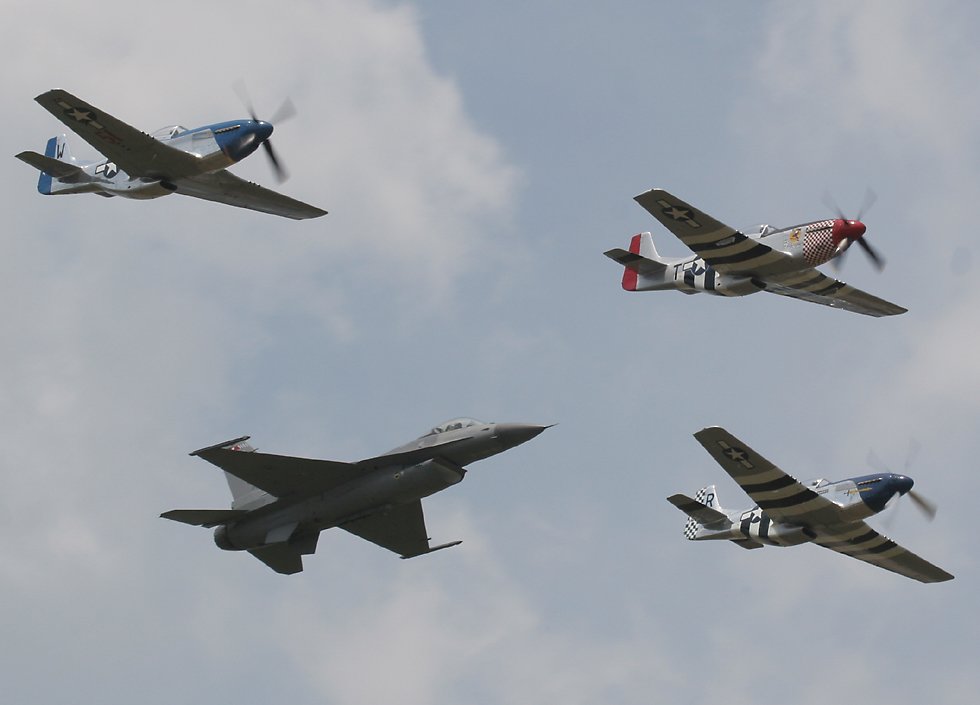 |

|
A nice tight photo pass formation from the F-16 and the P-51 "Shangrila". |
 |

|
And a fast solo pass from the F-16 during its tactical demonstration.
We're close enough in this shot to see the maps and notes strapped to the
pilot's legs!
|
 |

|
The biggest departure from tradition this year was undoubtedly the presence
of the navy's Blue Angels jet display team. Whenever the Blue
Angels or their air force equivalent the Thunderbirds are at a show, attendance
will skyrocket, since a lot of people turn up who wouldn't normally go
to a warbirds display. The extra income is a very helpful thing
for the Yankee Air Museum, which has been working hard to replace their
museum buildings since they burned down a few years ago.
|
 |

|
In my opinion the Blue Angels are the best national military jet display team
in the world, combining exciting high-performance aircraft with close formation
flying which is second to none. They started flying in 1946,
making them the oldest military display team in the world.
|
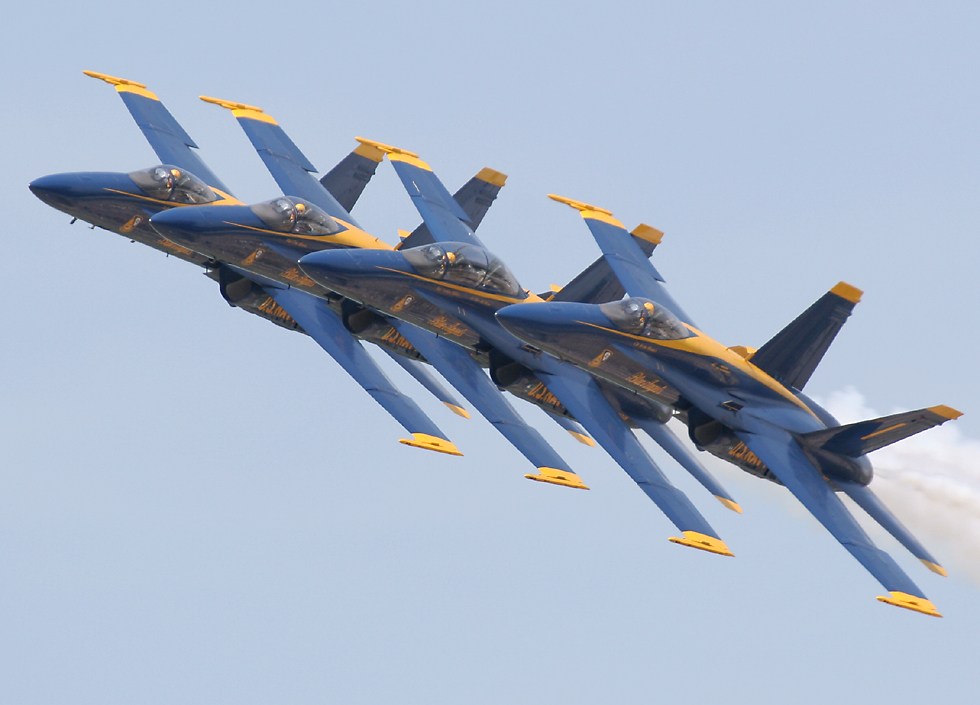 |

|
They started in F6F Hellcats and quickly transitioned to F8F Bearcats, before
entering the jet age with the straight-winged F9F Panther and then the
swept-wing F9F Cougar. After a few years they started using
the little-known F11F Tiger, which continued in service for 12 years until
replaced by the F-4 Phantom II. Fifteen years later they swapped
to the A-4 Skyhawk, and after another 12 years they went to the F-18 Hornet,
which they've been using for the last 21 years.
|
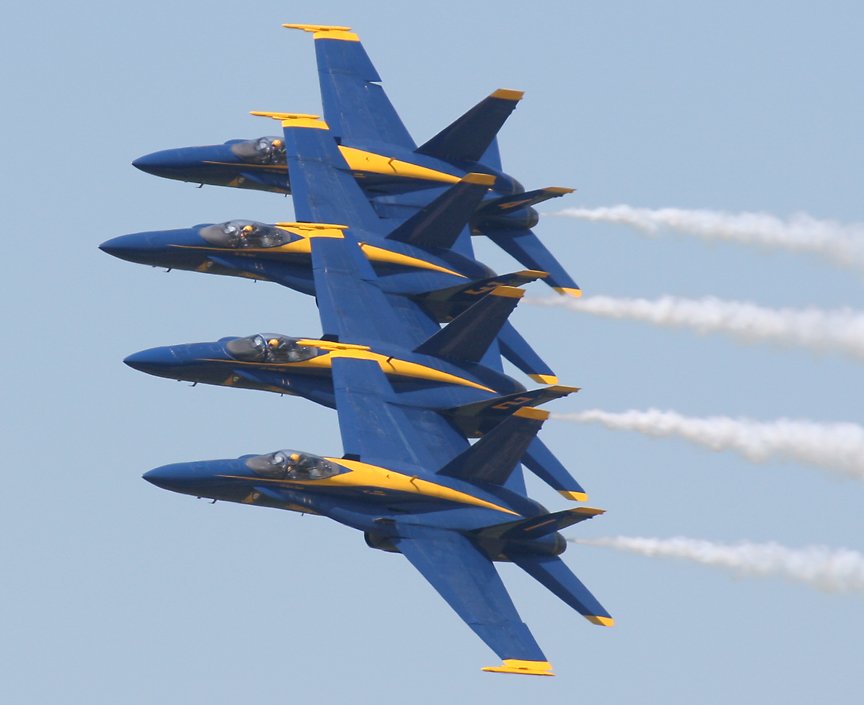 |

|
They have six aircraft in the air during a demonstration, two of the aircraft
acting as "opposing solos", the other four flying as a "diamond", and at
times all six aircraft will come together in the "delta" formation.
|
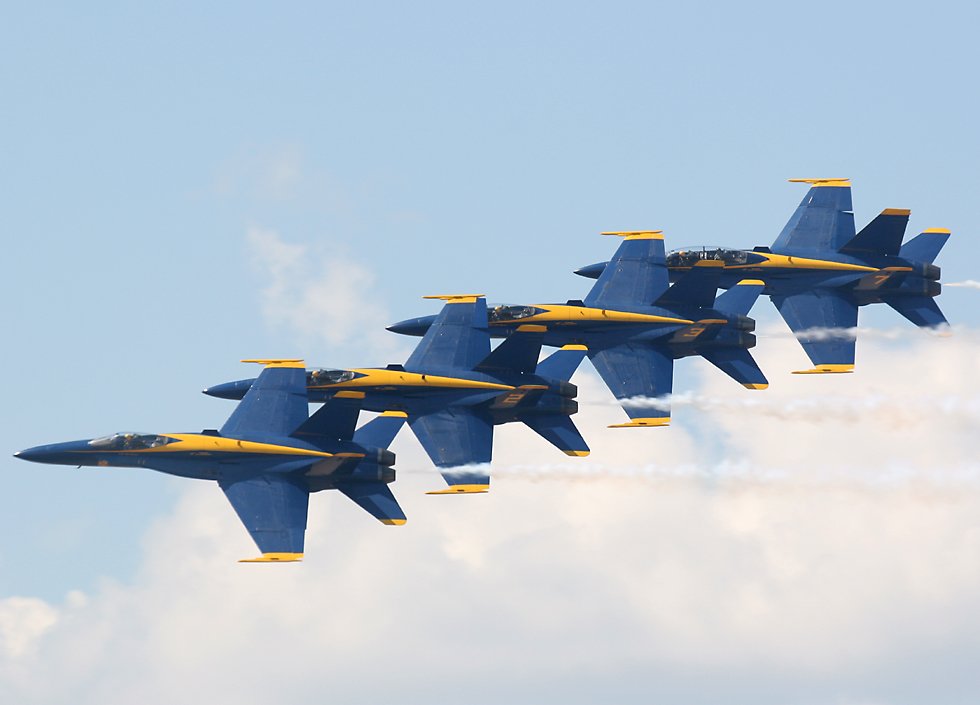 |

|
In 1992 the Blue Angels became the first foreign military display team to
perform in Russia, in the middle of the peak period for Soviet aircraft
displaying at western airshows. The Russian teams do some spectacular
flying and get to do some neat tricks like popping flares, as you can see
from their demonstrations at MAKS
2005 and Gidroaviasalon
2006, but for sheer flying skill there's no question that the Blue
Angels have them beat!
|
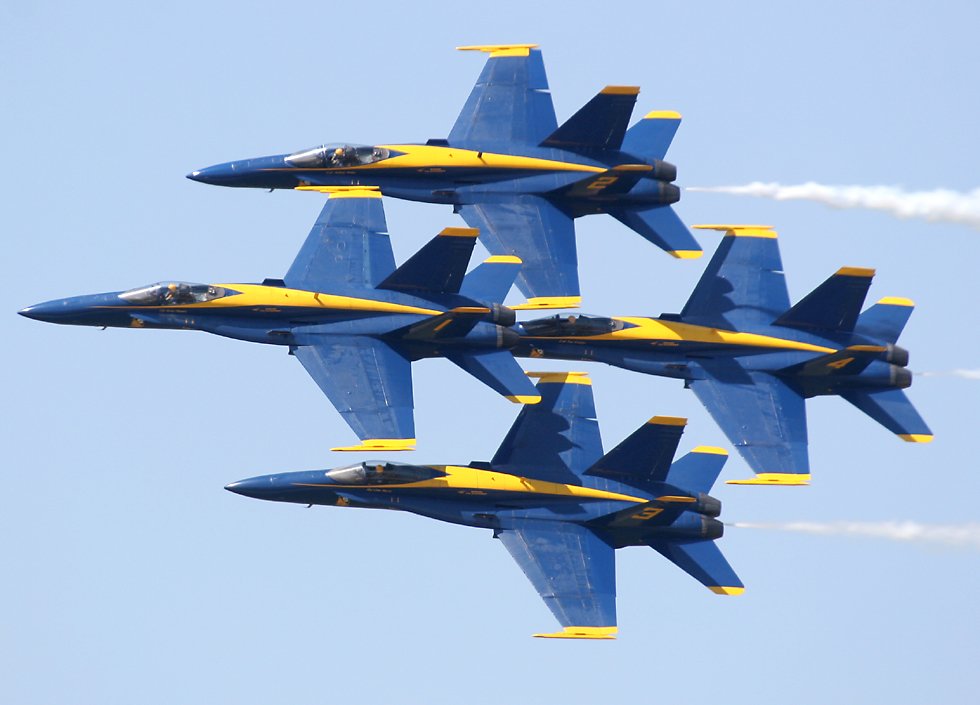 |
See the Thunder Over Michigan Airshow in
2003,
2005 and
2006.
